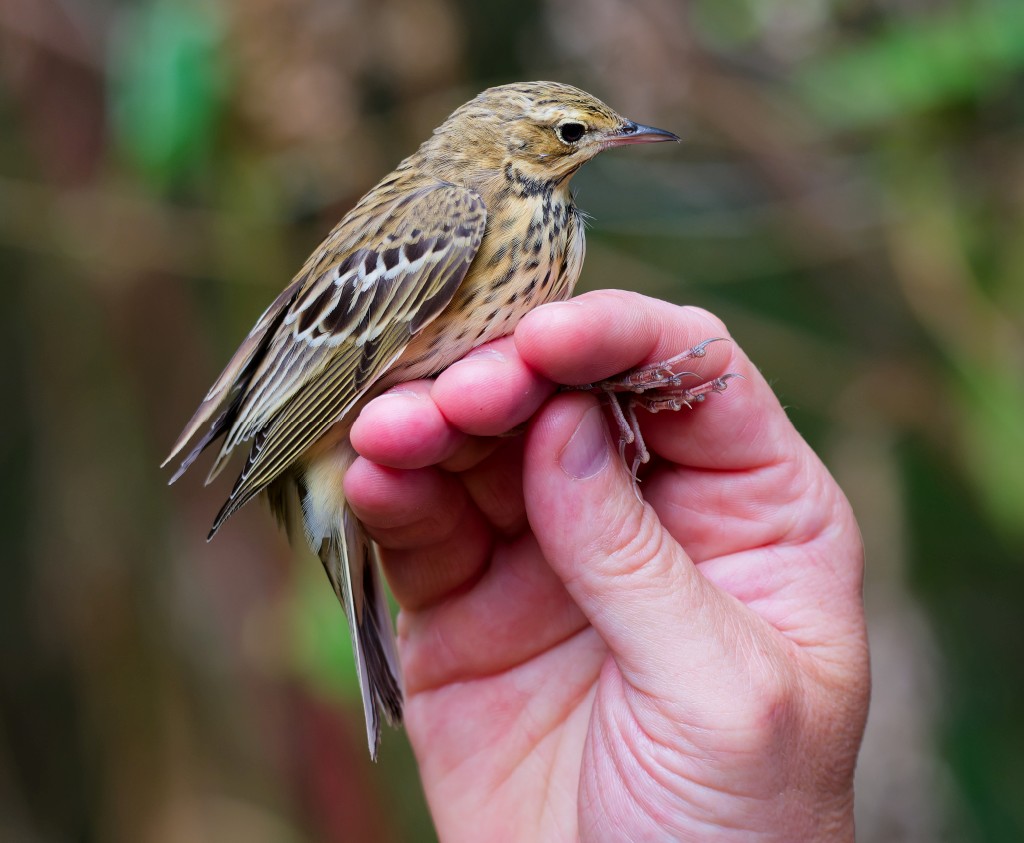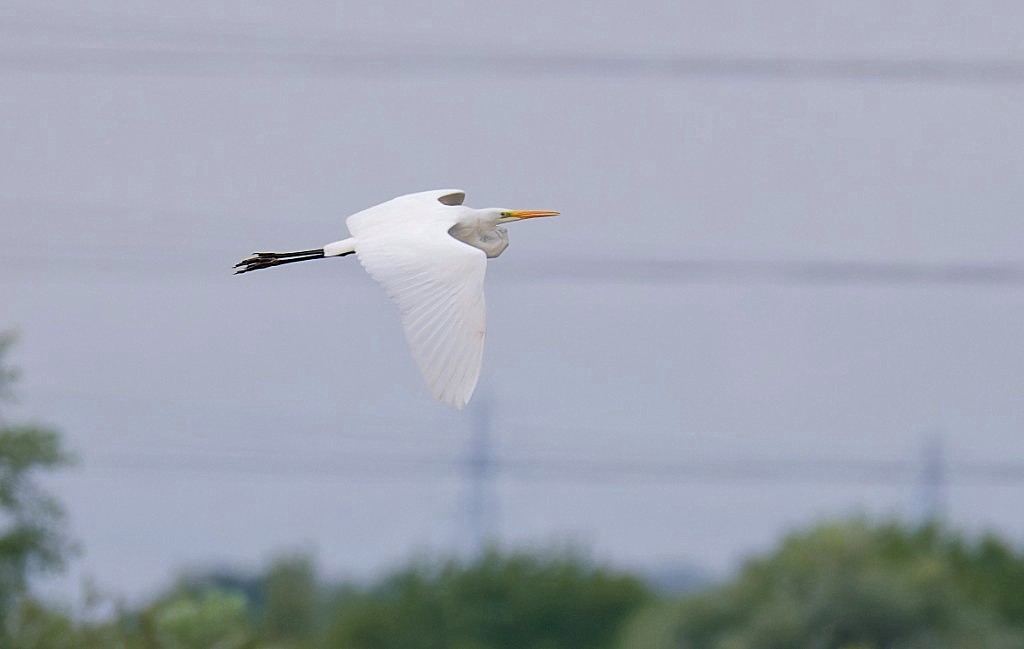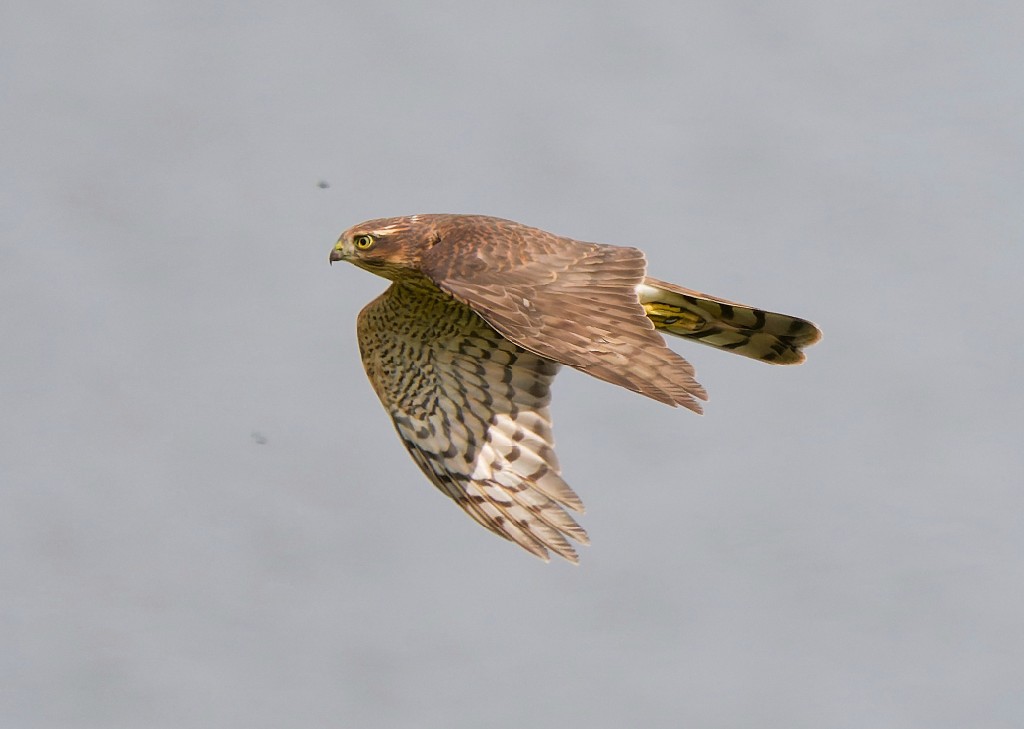Woolston Eyes Monthly Sightings
2025-08-23
Water levels continue to drop, though this is currently suiting the dabbling ducks, with hundreds of Shoveler and Gadwall taking advantage of the conditions. Waders, though, have been thin on the ground, with just one or two Green Sandpipers around most days and a Common Sandpiper this morning. A glimpse of return passage came with three Crossbills and a Lesser Redpoll flying south over No.4 bed on Thursday morning. The main sign of migration, though, has been the early passage of Blackcaps, with well over a hundred ringed over the week, attracted by the early berry crop. It looks as if the peak time for Blackcaps passage may now have shifted from September to August, maybe permanently, based on the weather patterns of recent years. August is also peak passage time for Tree Pipits and a fourth of the week was caught and ringed this morning, by Kieran Foster’s team on No.3 bed. The No.3 bed feeding stations are also proving attractive to scores of finches, mainly Greenfinches, which has attracted the attentions of several Sparrowhawks. So, it was no surprise when a smart little juvenile male turned up in one of the ringer’s nets, just the second one ringed on the bed this year. Photo of the ringed Tree Pipit Cheers David Bowman (with Helen Wynn, Brian Baird and Brian Martin)
Submitted by: David Bowman
2025-08-19
This unprecedented dry spell is having a real impact at Woolston Eyes. In some ways it’s good, as it’s benefiting those species which feed around the muddy margins, like Water Rails, or feed on the fish which are concentrated in ever-smaller areas, like Herons and Egrets. Saturday saw a record count, for us, of 16 Little Egrets on the Loop of No.4 bed, raising hopes that some will stay on to breed at some point in the future. On the debit side you could have been forgiven, this morning, for thinking we were well into autumn, with Hawthorns and Alders already heavy with berries, some of which were already past their best. The early nature of the crop may well account for the numbers of passage Blackcaps moving through, with 65 ringed over the week on No.3 bed, a number more usually associated with the September peak. We’ll have to see what the impact will be on our winter thrushes, Redwings and Fieldfares, which usually feed heavily on our berry crop when they arrive en masse in October but may, by then, find slim pickings. Sightings from this morning on No.4 bed included: 1 Green Sandpiper, 1 Great Egret, 7 Little Egrets, 13 Snipe, 13 Swifts, 3 Sand Martins and 20 House Martins. Photo of a Great Egret Cheers David Bowman (with Dan Owen)
Submitted by: David Bowman
2025-08-12
I’ve been so busy since returning from our Woolston Eyes trip to Kenya that I’ve not had time to post anything about events on the Reserve, so this is a quick catch up. Recent sightings of Tree Sparrow and Curlew Sandpiper, both very scarce visitors, has brought our year-list up to a creditable 151 species. Saturday’s WeBS count totalled 2,505 wetland birds of 27 species, which is decent for the time of year, particularly given the continued dry conditions. During the count I managed to photograph a Cormorant, which had been colour-ringed by Kieran Foster at Hale Duck Decoy on 24th June 2023 and has since been recorded visiting Pennington Flash, Silver Lane Pools and most recently, Hoylake on 25th June this year. This morning on No.4 bed the initially overcast conditions produced some movement, with Tree Pipit flying over, two Yellowhammers dropping in by the platform and eight Little Egrets moving between the Loop and the east cell, a high count for us. Out on the mud, a Ruff, a Little Ringed Plover, two Green Sandpipers and seven Snipe were feeding. You could feel the prospect of summer’s end, though, with the last juvenile Black-necked Grebe and just a dozen or so Swifts still present
Photo of a Sparrowhawk
Cheers David Bowman (with Dan Owen)
Submitted by: David Bowman



